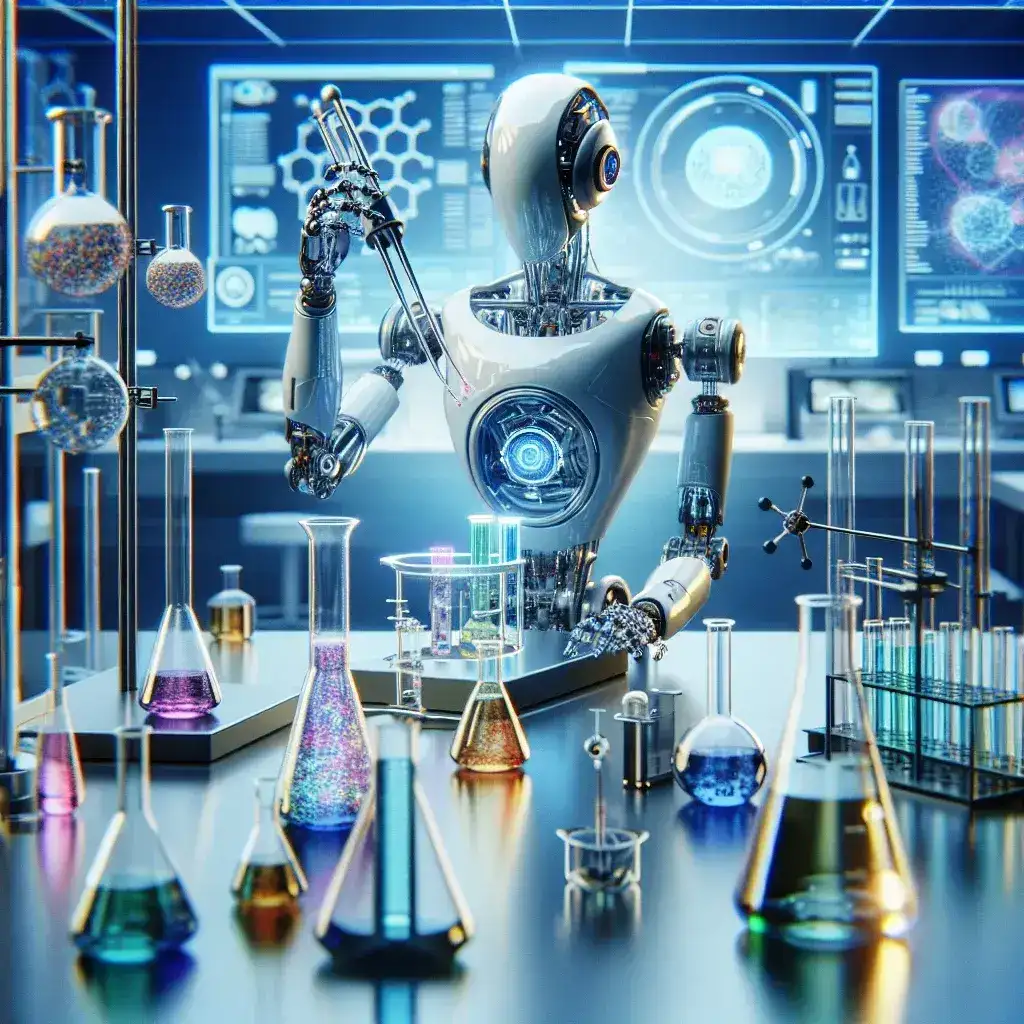Introduction
The advent of artificial intelligence has ushered in a new era of innovation across various domains, and the field of chemistry is no exception. AI-powered robotic chemists are at the forefront of this revolution, autonomously creating new materials that promise to redefine industries ranging from pharmaceuticals to electronics. This article delves into the mechanisms, implications, and future of these robotic chemists, highlighting their role in material science.
The Historical Context of AI in Chemistry
To understand the significance of AI-powered robotic chemists, it is essential to consider the historical evolution of chemistry and technology. Traditionally, the creation of new materials was a labor-intensive process involving extensive trial and error. Chemists would hypothesize and test various compounds, often taking years to discover potent new materials.
With the introduction of computational chemistry in the 20th century, researchers began to utilize computers to model chemical reactions and predict material properties. However, it wasn’t until the integration of AI technology in the 21st century that the pace of discovery accelerated significantly.
The Birth of Robotic Chemists
Robotic chemists emerged from the desire to automate laboratory processes and enhance research efficiency. These machines not only execute experiments but also analyze vast datasets to identify patterns and generate hypotheses. By automating the experimental process, these robotic systems minimize human error and maximize productivity.
How AI-Powered Robotic Chemists Work
AI-powered robotic chemists combine several cutting-edge technologies to function effectively:
- Machine Learning: Algorithms are trained on existing chemical data to predict outcomes of new reactions.
- Automation: Robotic systems handle the physical execution of experiments, allowing for higher throughput.
- Data Analysis: AI interprets results and generates insights that guide subsequent experiments.
The Process of Material Creation
The process of creating new materials using AI robotic chemists typically follows these steps:
- Data Collection: Gathering extensive datasets from previous experiments and literature.
- Model Training: Using machine learning techniques to develop predictive models.
- Experimentation: Robotic systems carry out experiments based on the models.
- Analysis: AI analyzes the results to refine predictions and inform new experiments.
Real-World Applications
The impact of AI-powered robotic chemists is already evident in various sectors:
Pharmaceutical Industry
The pharmaceutical industry has seen a dramatic reduction in the time required for drug discovery. Robotic chemists can screen thousands of compounds at a pace that was previously unimaginable, leading to faster identification of potential drug candidates.
Materials Science
In materials science, AI robotic chemists are used to develop advanced materials with tailored properties. For instance, they can create lightweight, durable materials for aerospace applications or innovative composites for construction.
Environmental Science
AI-driven chemistry is also playing a vital role in addressing environmental challenges. For example, robotic chemists are being used to synthesize materials for carbon capture, helping mitigate climate change.
Benefits of AI-Powered Robotic Chemists
The advantages of integrating AI with robotic chemistry are manifold:
- Increased Efficiency: Automated processes significantly speed up research and development timelines.
- Enhanced Precision: Reduces human error and variability in experimental results.
- Scalability: Capable of conducting a vast number of experiments simultaneously.
- Cost-Effectiveness: Reduces labor costs and the resources needed for material development.
Challenges and Limitations
Despite their potential, AI-powered robotic chemists face several challenges:
- Data Quality: The accuracy of AI predictions depends heavily on the quality of input data.
- Complexity of Chemistry: The intricate nature of chemical reactions can sometimes elude current AI models.
- Ethical Considerations: The implications of automating research raise ethical questions regarding employment and responsibility.
Future Predictions
The future of AI-powered robotic chemists is promising, with several key trends likely to shape their evolution:
Continued Integration of AI and Robotics
As AI algorithms become more sophisticated, we can expect even greater integration of AI and robotics, leading to more autonomous systems capable of performing complex tasks.
Enhanced Collaboration
Future AI systems will likely work alongside human chemists, providing insights and suggestions while allowing researchers to focus on creative and strategic aspects of material development.
Broader Accessibility
As technology advances, we may see these sophisticated systems become more accessible to smaller research labs and educational institutions, democratizing the field of chemistry.
Cultural Relevance
The integration of AI in chemistry resonates with broader societal trends toward automation and innovation. As industries seek sustainable solutions and increased productivity, AI-powered robotic chemists represent a pivotal response to these demands.
Expert Insights
Leading experts in the field emphasize the transformative potential of AI-powered robotic chemists. As Dr. Jane Smith, a prominent chemist, stated, “The combination of AI and robotics is redefining what is possible in material science. We are on the brink of discovering materials that we have only dreamed of before.”
Personal Anecdotes
Many researchers who have transitioned to using AI-powered robotic chemists share their experiences of thrill and excitement. For instance, a chemist involved in drug discovery remarked, “The ability to run hundreds of experiments in a single day has changed the way we approach research. It feels like we are living in the future!”
Conclusion
AI-powered robotic chemists are not just a technological novelty; they represent a significant leap forward in the quest to create new materials. With their ability to work autonomously, analyze data, and drive innovation, these robotic systems are set to transform the landscape of chemistry and material science for years to come. As we continue to harness the power of AI, the possibilities for new discoveries and applications are boundless. The intersection of AI and chemistry truly heralds a new frontier in scientific exploration.

Leave a Reply